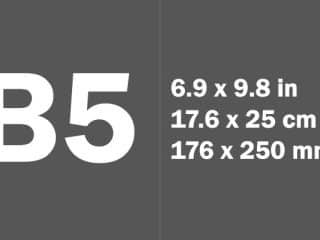Last Updated on April 15, 2024 by Carlos Alonso
A brand that’s consistent and visible on all platforms––whether digital or traditional––is a major asset for any company. It’s no secret that managing a brand is difficult, especially when you are using a number of different platforms that potentially speak to a variety of different audiences and stakeholders.
In the first instance, your brand must have a consistent tone regardless of where it is visible. All brand and marketing collateral must also be current, accurate and up to date.
To understand what effective brand management techniques to use, you first need to understand the exact nature of brand management.
What is brand management?
As hinted above, brand management is the process of managing your brand’s reputation. The primary goal of brand management is to improve both your prospects’ and existing customers’ perceptions of your brand, increasing brand loyalty, equity, and awareness.
Moreover, keep in mind that brand management is different from branding. The latter involves developing your brand, while the former means sustaining and monitoring your entire efforts. In other words, brand management consists of using your brand and branding assets to establish trustworthy relations with your brand’s customers, supporters, and admirers.
Uncommon brand management tips
If you’re a brand manager, there’s a chance that you already know the importance of having a solid relationship with your target audience. However, in addition to managing, analyzing, planning, and executing your brand within your industry, always remember that brand management is a never-ending process.
Therefore, be sure to be on top of the below as it may not be something you will be aware of until things start to go wrong.
- Have a style guide
If you have plenty of content published externally and internally, always have a uniform style guide. A style guide is helpful for your brand since it’ll allow you to create consistent and clear content, as well as professional and on-brand templates and documentation. Having a style guide ensures everyone who touches the brand is presenting it in the same way. Hence, aside from promoting consistency, your style guide will also act as the determinant of the tone of voice.
You may want to consider investing in high-quality UX writers, documentation experts, and high-quality content marketers. These professionals will help build trust with your target audience, as they have the skills needed to generate concise and clear communications to the right audiences. As a result, your existing and potential customer base will have a unified vision of your brand; if they see a particular font your brand used, they’ll associate it with your brand.
- Prioritize in-house brand development
If your customer representatives are fully aware of your customer’s perception of your products or services, make sure to ask for their feedback on improving your offering and streamlining the customer’s buying journey. Doing so will allow you to create a viable and sustainable brand, not to mention that you’ll also evolve your brand internally. Furthermore, internal insight about your brand is strengthened by brand asset management, which is the process of preserving any tangible business elements as well as keeping these elements consistent throughout your branding efforts. Thus, provide your in-house brand development team with a unified location to view, download, and share brand assets. Business administrative software like Jobber can support this. Such software is widely available for any business or industry niche. Taking advantage of such systems will make it easier for your team to preserve and dispense brand assets within their groups.
- Use third parties
Using any third parties in your brand management, including promotion, advertisements, and conversations will allow you to access reliable brand asset materials. Additionally, keep in mind that solely focusing on in-house sources may result in having a narrow perception of your brand. Thankfully, a third-party provider may help give your branding a new perspective on asset changes or evolutions. The right third-party provider may even provide valuable tips concerning brand management that you and your team haven’t considered. However, your line of communication won’t be as good between you and suppliers or consultants as with your internal team members. As a solution, when onboarding third-party providers, make sure they’re also a part of your content management application.
- Be available where your brand belongs Even the most popular brand can’t be everywhere at once. So, determine where you want to be seen and heard. To know such an avenue, identify who your customers are and the platforms they regularly use. Choosing a platform that’s not being used by your target audience will only lead to a waste of investment in time and money.
Monitoring and measuring brand perception
If your brand’s values aren’t appropriately conveyed, all of your branding efforts will be futile. That’s why analyzing, questioning, monitoring, and measuring are essential to robust brand management. Monitoring and measuring your brand management efforts will allow you to have a solid answer to these important questions:
- Is your brand management a success?
- Are you using the right print designs to develop your brand?
- Does your branding use the right tone of voice for your particular target audience?
- Do your employees believe and recommend your products or services?
- Is your brand identity keeping up with the trend in your industry?
Successful brand managers suggest measuring your brand perception every six months to one year. This way, you’ll know if your target audience is perceiving your brand the way you want them to. In return, you’ll have the assurance that your business is growing since it’s in tune with the promise you give to your customers.
Wrapping up
Your brand’s value will significantly influence your target audience’s perspective and buying decisions. This is especially true since consumers, both online and in physical stores, now have extensive access to various products and services, making the competition in any industry difficult. Make brand management one of your business priorities and have the edge over your competition. Even though brand experience can be easily overlooked, brand management increases the chance that your brand will show that your products and services are the answers your consumers, fans, and supporters are looking for. Thankfully, these five brand management tips no one talks about will elevate your brand management efforts.
References
“Brand Management”, Source: https://www.investopedia.com/terms/b/brand-management.asp
“How to Define Your Brand’s Tone of Voice”, Source: https://www.semrush.com/blog/how-to-define-your-tone-of-voice/
“Benefits of Using a Third-Party Market Research Firm”, Source: https://www.driveresearch.com/market-research-company-blog/benefits-of-using-a-third-party-market-research-firm/
“Why Your Brand Needs A Real Style Guide”, Source: https://www.forbes.com/sites/propointgraphics/2016/07/24/brand-style-guides/
















